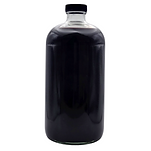
Textile Manufacturing: Addressing Textile Dyeing Wastewater
At Viridis, we are partnering with some of the world's leading fashion brands and their suppliers to drive sustainable change.
We offer tailored feasibility studies to demonstrate the efficacy of our advanced water treatment technology in addressing our customers' water-related goals.
Wastewater Characterization and Analysis
Data-Driven Insights
Technology Compatibility Assessment
Customized Testing Plans

01. CASE STUDY
Reactive Dye Treatment on Cotton
99%
Reduction in color intensity
99%
Reduction in turbidity
The Challenge
Reactive dyes used in cotton textile production release highly complex and concentrated wastewater. The effluent from this process is characterized by high turbidity, chemical oxygen demand (COD), elevated conductivity, and intense coloration. Conventional systems often struggle to treat it, especially without multiple cycles or chemical pre-treatment.
One of the largest global fashion brands engaged Viridis to assess the viability of incorporating our technology into its dyeing and finishing processes.
The Results
Viridis' water treatment technology demonstrated remarkable efficacy in treating the wastewater samples. We achieved a stellar 99% reduction in both color and turbidity, material reduction in overall COD, and a balanced pH.

Before Treatment
.png)
After Treatment
The Challenge
Reactive dyes used in cotton textile production are notoriously resistant to breakdown due to their high solubility and stable chemical structure. The resulting wastewater is often dark, chemically concentrated, and difficult to treat—posing challenges for both environmental compliance and water reuse in manufacturing settings.
A global fashion powerhouse with ambitious commitments to reduce water consumption across its supply chain engaged Viridis to assess the viability of incorporating our technology into its dyeing and finishing processes.
The Results
Viridis' technology delivered outstanding results, achieving a 98% reduction in color and 99% reduction in turbidity. COD levels were reduced to customer targes, while pH was successfully balanced.
.png)
Before Treatment
.png)
After Treatment

02. CASE STUDY
Reactive Dye Treatment on Cotton
98%
Reduction in color intensity
99%
Reduction in turbidity

03. CASE STUDY
Acid Dye Effluent Treatment on Polyamide (Nylon)
The Challenge
Acid dyes used in nylon (polyamide) manufacturing are highly water-soluble and tend to persist through conventional wastewater treatment methods. The resulting effluent is often heavily colored, turbid, and rich in organic contaminants—making it unsuitable for discharge or reuse without intensive treatment.
An innovative textile and apparel manufacturer engaged Viridis to assess the viability of incorporating our technology into its dyeing and finishing processes.
The Results
In a single 30-minute treatment cycle, Viridis' technology successfully processed 100 litres of black-dyed effluent, achieving the customer's color, turbidity and COD targets and restoring the water to conditions suitable for reuse.
.png)
Before Treatment
.png)
After Treatment
Book a Feasibility Study
If you would like to assess the suitability of Viridis' ground-breaking water treatment and reuse system in unlocking water recycling in your operations, please reach out using the form provided below. We look forward to hearing from you!